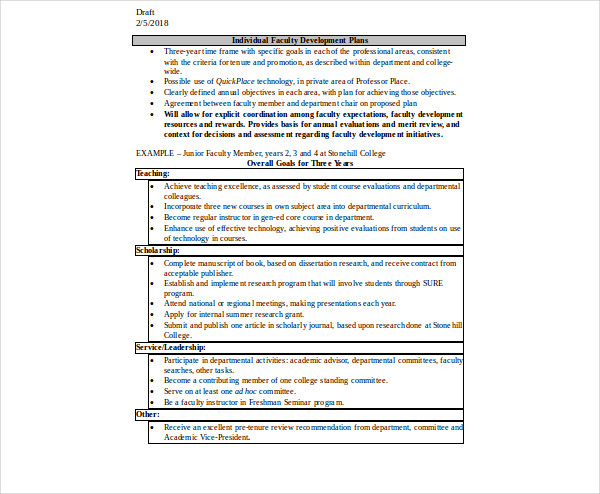- How To Start Programming In Eclipse For Mac
- How To Start Programming In Eclipse For Mac Operating System

When you launch Eclipse for the first time you have to create a workspace that will hold all your projects. After that every time you open Eclipse IDE, you will be shown a dialog to select the workspace. In the above dialog, you can either create a new workspace or select an existing workspace, click ok and the IDE will open. To use it with Python, install Eclipse IDE for JavaScript and Web Developers, based on Eclipse Neon 4.6, then add the PyDev plugin. PyDev and Eclipse work together to. Scroll down until you see 'Eclipse IDE for Java Developers' and click where it says 64 bit under Mac OS X. You will see this window: Click on the yellow download button. If asked, click on 'Open with Archive Utility (default)' and then click OK. Mac users can drag this to the dock area to quickly launch Eclipse from desktop, similarly Windows can create a shortcut of Eclipse on desktop. Installing and configuring Apache tomcat server in Eclipse. In order to run Servlet in Eclipse IDE, you need to have Apache tomcat Server configured in Eclipse IDE. The Java Development Tools (JDT) project provides a plug-in that allows Eclipse to be used as a Java IDE, PyDev is a plugin that allows Eclipse to be used as a Python IDE, C/C Development Tools (CDT) is a plug-in that allows Eclipse to be used for developing application using C/C, the Eclipse Scala plug-in allows Eclipse to be used an IDE to develop Scala applications and PHPeclipse is a.

Install a new version of Eclipse to use with C++
You may want to print these instructions before proceeding, so that you can refer to them while downloading and installing MinGW and Eclipse. Or, just keep this document in your browser. You should read each step completely before performing the action that it describes.
Eclipse: Version 4.5 (Mars)

The Eclipse download requires about 200 MB of disk space; keep it on your machine, in case you need to re-install Eclipse. When installed, Eclipse requires an additional 200 MB of disk space.
Downloading
- Click Eclipse
The top of the following page will appear in your browser.
In this handout we will download Eclipse Standard 4.5 for Mac OS X 64 Bit; if your computer uses Mac OS X (Cocoa), continue below; otherwise look for the pull-down list showing Mac OS X (Cocoa) and instead choose either Windows or Linux and then continue below.
- Click the 64 Bit (under Mac OS X) under the heading Eclipse IDE for C/C++ Developers (the fourth selection from the top).
You will see the following page (don't worry about the name of the institution underneath the orange DOWNLOAD button).
- Click the orange DOWNLOAD button. The site named here, in orange, underneath the DOWNLOAD button: United States - Indiana Unversity (http) is the random one chosen by the download page this time; yours may differ.
This file should start downloading in your standard download folder. This file is about 200 Mb so it might take a while to download fully if you are on a slow internet connection (it took me about 5 minutes over a cable modem). Don't worry about the exact time as long as the download continues to make steady progress. In Chrome progress is shown on the bottom-left of the window, via the icon
The file should appear as
Terminate the window browsing the Eclipse download.
- Move this file to a more permanent location, so that you can install Eclipse (and reinstall it later, if necessary).
- Start the Installing instructions directly below.
Installing
- Double click the file eclipse-cpp-mars-R-macosx-cocoa-x86_64.tar.gz, the file that you just downloaded and moved. It will unzip the file and create an Eclipse application, which appears as
Move this application into the Applications folder and put it on the dock for simple access. Now you are ready to perform a one-time only setup of Eclipse on your machine.
- Double-click the Eclipse icon on the Dock that you just created above.
The following pop-up window will appear
(note it says Eclipse Cpp here, because I already have Eclipse installed for my work with Python, so on my machine I renamed this application Eclipse Cpp.
- Click Open.
The following splash screen will appear
and then a Workspace Launcher pop-up window will appear.
In the Workspace text box, your login name should appear between /users and /Documentsworkspace, instead of my name, richardepattis.
Leave unchecked the Use this as the default and do not ask again box. Although you will use this same workspace for the entire quarter (checking projects in and out of it), it is best to see this Workspace Launcher pop-up window each time you start Eclipse, to remind you where your workspace is located.
- Click OK.
Progress bars will appear at the bottom of the spash screen as Eclipse loads.
Eventually the Eclipse workbench will appear with a Welcome tab covering it.
- Terminate (click X on) the Welcome tab.
You will not see the Welcome tab when you start Eclipse after this first time. You should now see the following Eclipse workbench.
Notice the C/C++ words/icon appear on the top left (in the Window title-bar) and below the upper right-hand corner (beneath the tool-bar).
Xcode
In this section we will download/install Xcode. Before downloading Xcode (this software is free) you must have anHow To Start Programming In Eclipse For Mac
itunes account.- Download/Install Xcode by opening a browser and pasting the following url: https://developer.apple.com/xcode/downloads/.
It will pop-up the following Developer window.
- Click the View in Mac App Store > link. It will bring pop-up the following itunes window
- Click the Get button (underneath the hammer). The pop-up window will change to
- Click the Install App button (same location).
When I did this, I received the following message in a pop-up window (because I am running Mac OS 10.9.5).At this point I clicked OK and returned to the original Xcode window, scrolled to the bottom (left), and clicked on the Additional Tools link. I was redirected to login with my Apple ID.
I entered my Apple ID and password and clicked Sign In.
Next a pop-up window with an Apple Developer Agreement appeared; I scrolled to the bottom.I clicked the box binding me to the agreement and clicked the Submit button.
Next a pop-up window with various developer tools appeared. I scrolled down to Xcode 5.1 (dated April 9, 2014) and clicked on the + to disclose the Xcode 5.1.1.dmg link.I clicked this link; note the download occupies 2.1Gb of storage: my download took 30 minutes. Then I double clicked the downloaded .dmg file and a pop-window showed itself briefly.
Then a pop-window window asked me to drag/drop Xcode to the Applications folder.
I dragged/dropped Xcode to the Applications folder, and a pop-up window showed itself during the copying.
Then I repeated these steps for Xcode's command line developer tools. I scrolled to Command Line Tools (OS X 10.9) for Xcode - September 2014 (dated September 1, 2014) and clicked on the + to disclose the link.
I clicked this link; note the download occupies 102Mb of storage: my download took just a few minutes. Then I double clicked the downloaded .dmg file and a pop-window showed itself briefly, followed by the following pop-up window.
I double clicked the icon and the following pop-up window appeared, with the word Introduction highlighed.
I clicked the Continue button, and following pop-up window appeared, with the word License highlighed.
I clicked the Continue button, and following pop-up window appeared
I clicked the Agreee button, and following pop-up window appeared, with the word Installation Type highlighed (it skipped highlighing the Destination Select.
(this image appears to be missing)
I clicked the Install button, and following pop-up window appeared.I entered my password and clicked the Install Software button, and following pop-up window appeared, showing the installation progress.
Eventually, that window was replaced with the following pop-up window with the word Summary highlighed.
I clicked the Close button and terminate the Command Line Developer Tools window.
- Open a terminal and type (don't copy/paste) to its prompt: xcode-select --install as shown below.
I pressed return and following pop-up window appeared
I clicked the Install button, and following pop-up window appeared.
I clicked the Agreee button, and following pop-up window appeared briefly.
When it disappers, the following pop-up window appeared.
I clicked the Done button. Then I closed the terminal window.
- Go the the Launchpad and double click the Xcode icon. The following pop-up window will appear briefly
It is replaced by the following pop-up window.
- Click Open. The following pop-up window will appear
Click Agree. The following pop-up window appeared.
I entered my password and clicked OK. The following pop-up window will appear briefly
It is replaced by the following pop-up window.
Click Open Other and the following pop-up window will appear (yours might have diffierent documents, but it should show the workspace that you created when you started Eclipse). Click that workspace (to select it) and click Open.
KLUDGE: is this necessary? Could I have dismissed this window and still have run the code?
Eclipse Verification
In this section we will Eclipse/C++ is working correctly.- Re-open Eclipse if it is not open.
- Start a new project by clicking on the 'down-pointing' black triangle to the right of the left-most icon on the Eclipse tool-bar (not at the top of the screen, but on the window runnin Eclipse). Fill in the Project Name as test; in Project type ensure Empty Porject is selected; in Toolchains ensure MacOSX GCC is selection. The pop-up window should appear as
Click Finish.
- Right click the test folder and select Source File as shown in the window below.
- Enter trivial.cpp after Source file: as shown in the window below.
Click the Finish button.
- Copy/paste the following text starting at line 8 in the trivial.cpp editor.
- Right click in the *trivial.cpp editor tab and select Save.
The * in the editor tab (meaning the file is unsaved) should disappear.
- Click the hammer (or right-click the test folder and select Build Project) and the Console window at the bottom (click it if it is not active) should show a successful build.
- Right click in the trivial.cpp editor and select Run as and then 1 Local C/C++ Application. The Console window should show a successful run. You can run this application in the future by clicking the right-pointing white triange in the green circle (the leftmost one of the three).
You have now verified the installation of Eclipse for C++.
Introduction
Eclipse is an integrated development environment (IDE) which provides the platform for computer programming. It is the most used java programming platform which contains a base workspace and provides the programming environment for other languages also like C, C++ via external plugins.
In this tutorial, we will learn the steps involved in the installation of eclipse on MacOS.
Prerequisites
- MacOS
- Login as an administrator on terminal.
Installation
Installation of Eclipse on MacOS includes several steps described below.
1) Download the latest version
This step involves downloading the latest version I.e. eclipse oxygen (by the writing of this tutorial). To install eclipse on our MacOS, we must download the latest version of eclipse by visiting its official website or simply clicking the link http://www.eclipse.org/downloads/download.php?file=/technology/epp/downloads/release/oxygen/1a/eclipse-java-oxygen-1a-macosx-cocoa-x86_64.dmg . The downloaded file exists in disk image file(dmg) format which is to be mounted first to get started with the installations.
2) Mount the dmg file
The dmg file which is downloaded from the official website of eclipse needs to be mounted first to the volumes directory. Hdiutil command can be used with the mount option to mount the file into the volumes folder. The process is shown in the image.
3) Copy Eclipse.app into Applications
After mounting the file, Eclipse.app is created inside /Volumes/Eclipse. This is an application file which needs to be copied to the application directory. The file needs to be unmounted after its deployment into the application directory.
4) Unmount the file

Unmounting the file simply involves ejecting the installer. For this purpose, unmount option is used with hdiutil command.
Well, we have successfully installed Eclipse oxygen on our MacOS.
How To Start Programming In Eclipse For Mac Operating System
